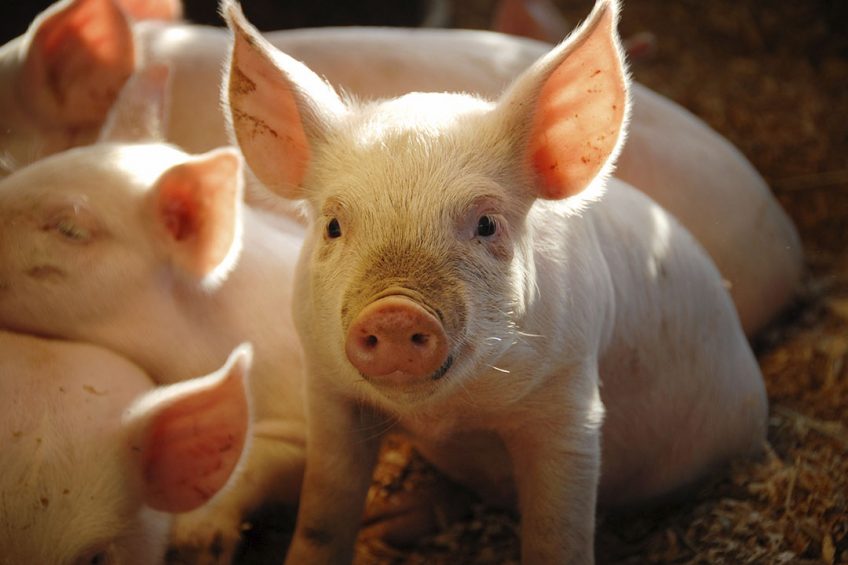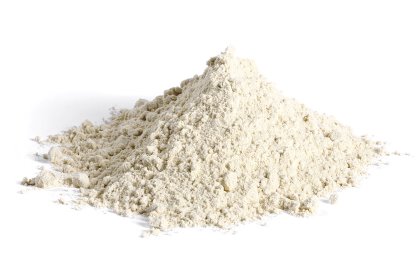SDPP is a safe feed ingredient – here is why

African Swine Fever (ASF) not only affected pigs – it has also led to bans on a series of feed ingredients. Although the virus has been shown to be capable of being transmitted through feedstuffs, the ingredient spray-dried porcine plasma (SDPP) is not one of them. Here’s why.
Spray-dried porcine plasma (SDPP) is a feed ingredient with highly digestible proteins and amino acids, and significant concentrations of functional bioactive components including immunoglobulins, transferrin, growth factors, peptides, and other biologically active components. Numerous peer-review publications document the beneficial effects of feeding diets containing SDPP to weaned pigs on growth, feed intake, feed efficiency, and survival compared to other high-quality protein sources. Spray-dried plasma was selected as number 6 of the top-10 of most important discoveries in swine nutrition in the past 100 years during a presentation at the centennial assembly of the American Society of Animal Science (ASAS) in 2008. In addition, spray-dried plasma is nowadays used in sow milk replacers to reduce pre-weaning mortality and improve animal welfare.
Spray-dried plasma and blood derivatives are ingredients which have been used worldwide for more than 30 years proving its use under different environmental conditions. Spray-dried plasma is probably one of the more scrutinised swine ingredients, with multiple peer review studies to this topic. Furthermore, plasma producers align their procedures with the World Health Organization (WHO) guidelines for viral safety for human blood transfusion products. Available data demonstrate that SDPP is safe for multiple viruses of concern in the swine industry, including African Swine Fever virus (ASFv).
Common procedures
The members of the European Animal Protein Association (EAPA) and the North America Spray-Dried Blood Products Producers Association (NASDBPP) represent more than 65% of the producers in the world. These associations have developed common procedures that follow WHO guidelines on viral inactivation and removal procedures. According to the WHO guidelines, viral safety is derived from three complementary approaches during manufacturing:
 Donor selection
Donor selection
For donor selection, only blood collected in commercial abattoirs under official inspection from animals that have been inspected and passed as fit for slaughter for human consumption is the exclusive raw material for the manufacturing of blood products. This precludes collection of blood from clinically sick animals or animals from restriction areas where OIE notifiable disease such as African Swine Fever (ASF), Classical Swine Fever (CSF) or Food and Mouth Disease (FMD) have been reported.
 Testing of donation and plasma pools
Testing of donation and plasma pools
The second premise in the WHO guidelines is testing of donations and plasma pools. The EAPA and NASDBPP producers conduct daily and regular analyses of the collected raw material that guarantees or assures the microbiological or physical-chemical quality of the finished product. Therefore, every single production lot is tested for microbial contamination to meet the strictest requirements for product quality as established by different worldwide regulations. In addition, PCR analysis to assure absence of cross species contamination or absence of specific pathogens are regularly conducted.
Plasma pooling is also a recognised safety step in the production of certain human plasma products. Although neutralising antibodies of notifiable disease, like ASFv, will be absent, the pooling effect will dilute by 1,000 to 10,000 times the blood of any single animal. For endemic pathogens that induce neutralising antibodies like PCV2 , this step can reduce potential infectivity.
 Viral inactivation and removal procedures
Viral inactivation and removal procedures
According to WHO guidelines, the manufacturing process should incorporate steps validated to remove or inactivate a wide range of pathogens. These guidelines define a robust safety step as an effective and reliable process step able to remove or inactivate substantial amounts of virus, typically four or more logarithms. Inactivation means that the virus is killed, or not capable of replicating. In addition, the WHO guidelines recommend that the production process should include one robust processing step able to inactivate non-enveloped viruses or two robust processing steps able to inactivate enveloped viruses.
One of the main safety steps in the manufacturing of SDPP agreed by the EAPA and NASDBPP producers is spray-drying at 80ºC throughout its substance. This step aligns with the EU directive 2002/99/EC which recognises meat intended for human consumption – and that the heat treatment of 80°C throughout its substance is an effective inactivation step for many viruses. ‘Throughout its substance’ refers to achieving a designated temperature to the core of the mass. Spray-drying plasma to 80°C throughout its substance simply means that each droplet of liquid plasma has achieved 80°C and has effectively been heated to assure compliance for a safe product regarding OIE list pathogens. Research has shown that spray-drying at 80ºC throughout its substance inactivates several swine viruses of interest, including ASFv as shown in Table 1.
Also, different peer reviewed publications reported that no infectivity was associated with feeding susceptible pigs diets for 7 to 45 days with high levels of commercial SDPP that was PCR+ to different tested viruses, see Table 2.
Another safety step common for EAPA and NASDBPP members is post-drying heat treatment of packaged products at ≥ 20ºC for 14 days. The storage conditions for SDPP held at room temperature (~20ºC) for 14 days has been demonstrated to inactivate certain pathogens like PEDv or PRRSv that are susceptible to dry environments and mild temperatures. In addition, the minimum14-day post-processing storage time allows for more time for tracking of farm origin raw material in the event of a new OIE list disease outbreak in a region where animal blood is being collected.
Collectively, SDPP and other spray-dried blood derivatives produced by EAPA and NASDBPP members globally are aligned with the WHO guidelines providing several independent features that assure that the final products are safe from pathogens of concern for the swine industry, including ASF virus.

Good farm biosecurity
Maintaining good farm biosecurity practices is the primary method for reducing risk of an OIE listed disease. Good biosecurity practices implemented by spray dried plasma producers include collecting blood only from authorised slaughterhouses under veterinarian supervision of the competent authorities, transporting in exclusive trucks, cleaning and disinfecting trucks wheels, allowing only permitted personal at the manufacturing plants, cleaning all the system at established time points and a good traceability of the incoming raw material and the destination of the final products. The whole process from the time the blood is collected from the animal to the final packed product is conducted in closed circuits that avoid external contamination with any tissue or external material.
Most OIE list diseases are transmitted primarily by animal to animal contact, transport vehicles (pig movement), people or other vectors. Recent studies using a simulation model of transboundary transport of various feed or feed ingredients inoculated with a variety of swine viruses have demonstrated that some viruses can survive for up to 180 days in certain feed ingredients like conventional soybean meal.
Scientifically based recommendations support the use of highly nutritional and functional porcine products in feed for swine. There is well reported peer-reviewed science behind the claims for the safety of these products for numerous pathogens affecting the swine industry, including ASFv.
Enhancing performance, reducing mortality
In short, research demonstrates that spray-dried porcine plasma is a safe ingredient for use in swine diets, especially around weaning and during various pathogen stress events. Spray-dried plasma use in feed provides value by enhancing pig performance and health to reduce mortality and morbidity and is a good consistent alternative to reduce reliance on antibiotics and zinc oxide used as growth promoters.
References available on request to the authors.











